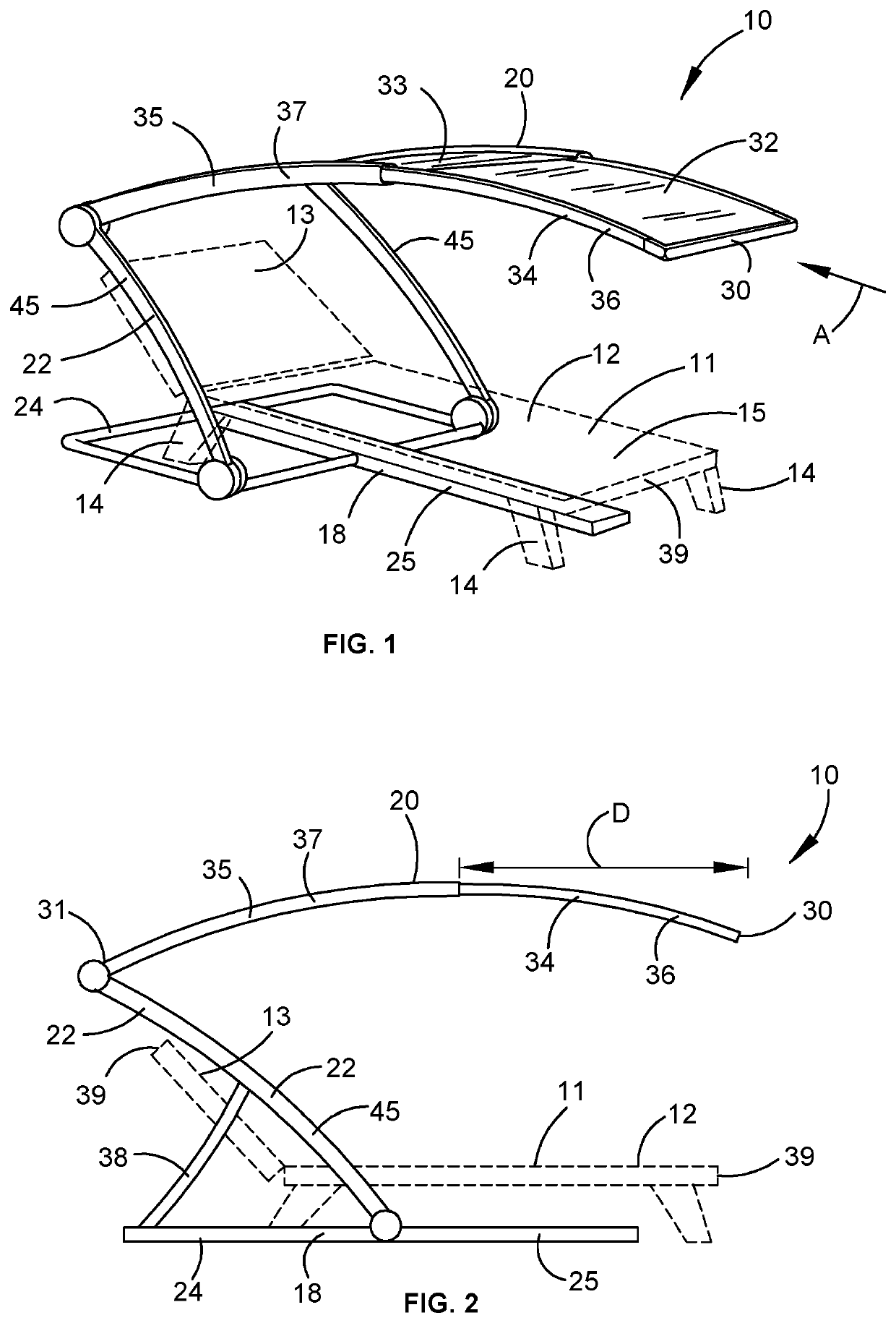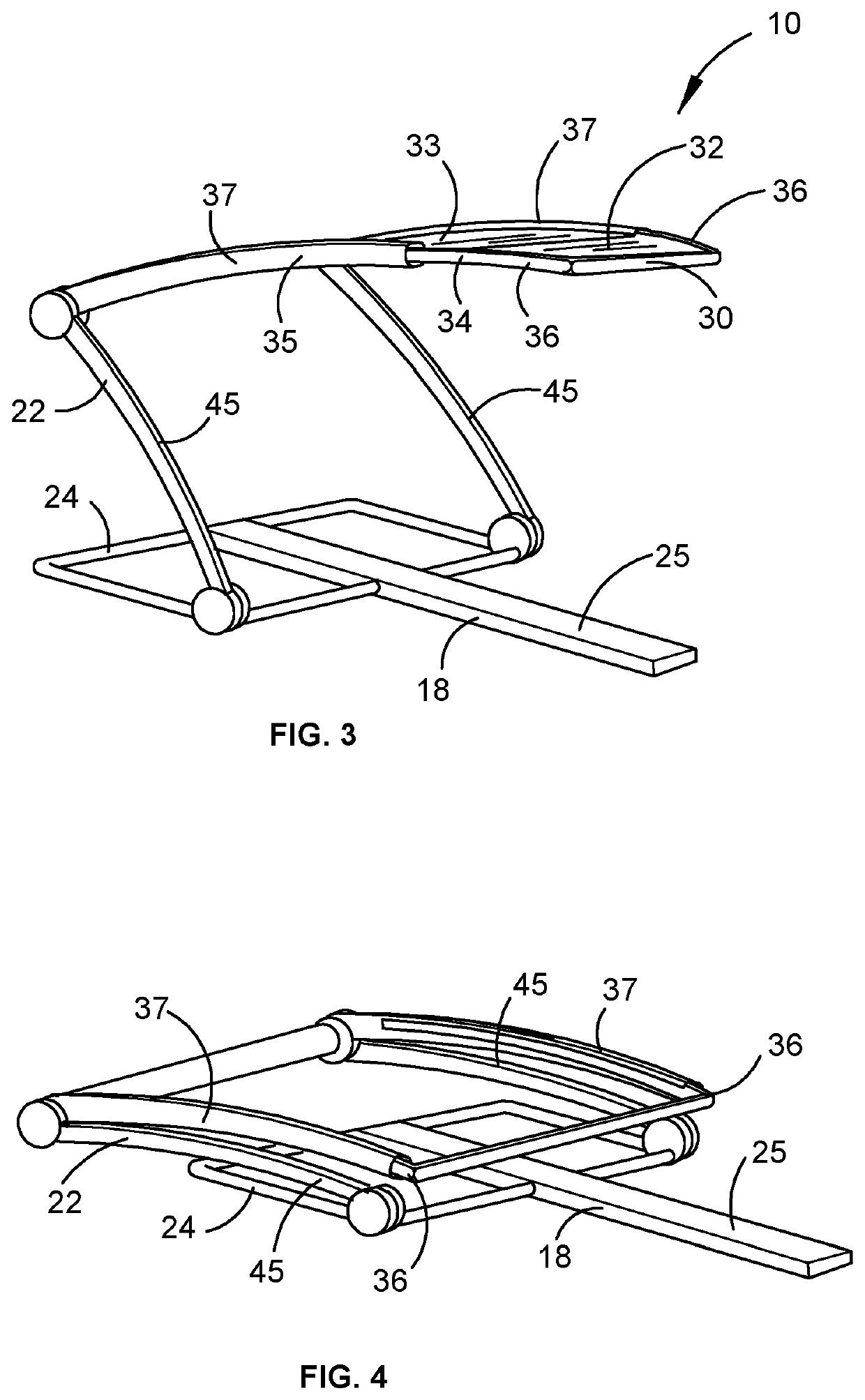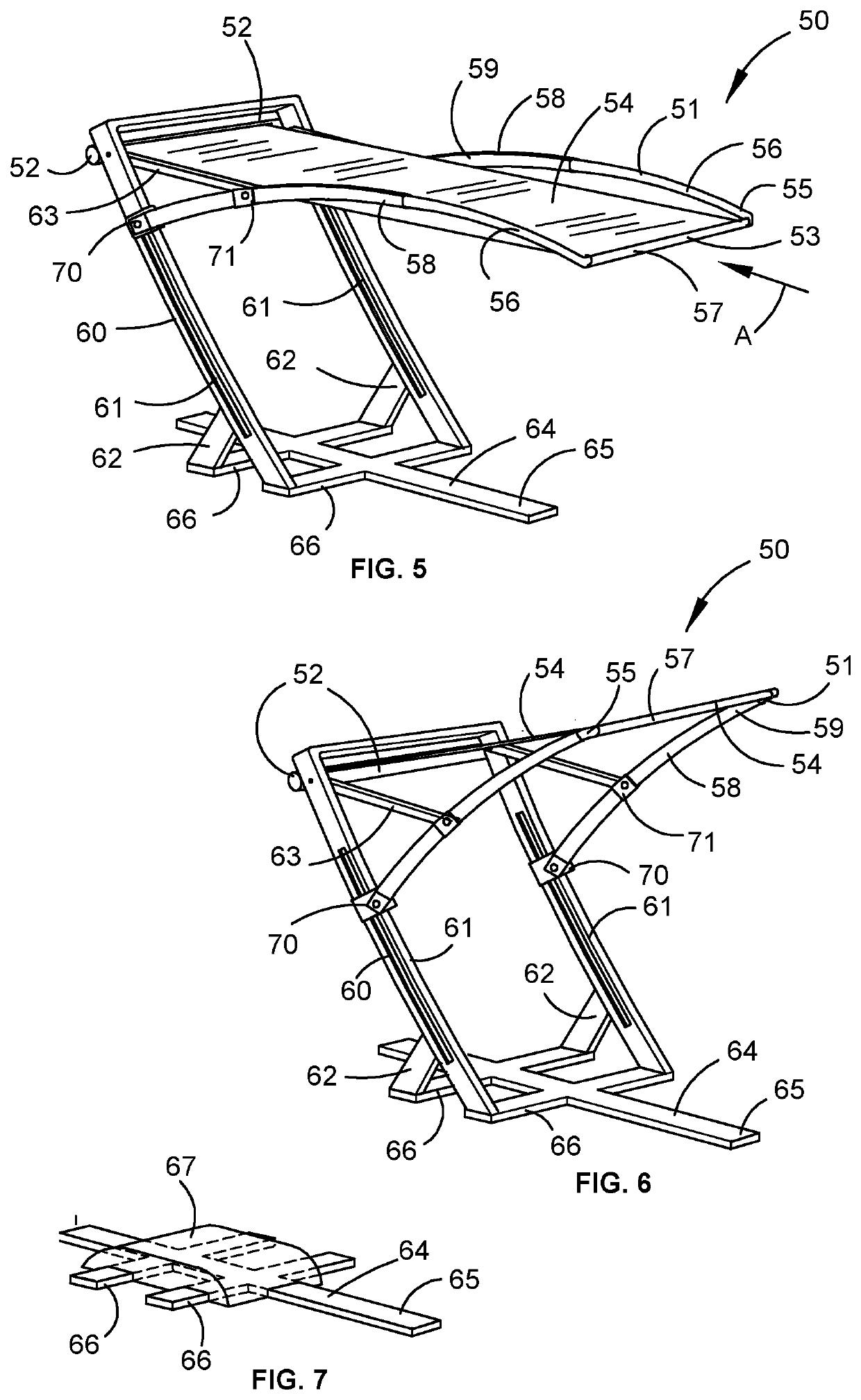Importantly, the
position of the sun in the
sky and the height and size of the canopy of a sun shelter significantly affects how much useful shade falls directly beneath the canopy for the benefit of a person occupying a sun lounge below the canopy, and how much additional shade is projected to areas beyond directly beneath the canopy's perimeter and which is generally superfluous in terms of protecting a person using a sun lounge against
exposure to
ultraviolet radiation.
This commonly results in a person using the sun lounge being forced to receive more or less sun or shade than desired for extended periods throughout the day depending on their position relative to the sun and the center pole.
This occurs because, where two sun lounges share a single umbrella positioned between them, this uneven distribution of shade often results in the sun lounge on the side nearest the sun being exposed to more direct and reflected
sunlight than the other.
This problem is more pronounced during
morning and afternoon when the sun is lower in the
sky, whereby the sun's rays can readily penetrate diagonally beneath the elevated canopy.
This limited degree of adjustability is generally unsatisfactory because the canopy can become more oblique in its orientation relative to the sun, thereby producing a smaller amount of narrow shade, while significantly increasing resistance to wind load.
This pole height has an associated negative consequence in that the greater the elevation of the canopy above the ground, the greater the scope for more sun light to penetrate underneath the umbrella.
Many of the limitations discussed above also
restrict the suitability of side-mounted umbrellas (for example, wall-mounted or cantilevered umbrellas that do not have a central pole) and often result in unsatisfactory shade performance in situations where mobility and limited space are a consideration.
The close proximity of adjacent sun lounges in the settings described above where available space is limited, exacerbates the aforementioned problems associated with the height of conventional umbrellas and the necessarily large relative surface area of their canopies, which together cause shade to be projected over a significantly greater space than that occupied by the intended sun lounge or lounges they overlie.
Further, in such circumstances there is little or no scope to reposition sun lounges that are arranged in close proximity to one another or to adjust the placement of the umbrella to negate the shifting of shade due to the sun's movement across the
sky.
As such, one or two guests sharing a single umbrella typically have little or no control over the amount of sun light or shade they receive, such that parts of their body may often be exposed or covered contrary to the user's preferences.
These limitations can combine to reduce the enjoyment of hotel, resort and
cruise ship guests and detrimentally affect poolside food and beverage revenues.
This is not a simple exercise and likely requires a
basic level of skill to properly fit the canopy to a new position and thus the user does not have a quick and convenient way of adjusting shade levels.
The extent of adjustment is also limited by the canopy being formed to have a single, generally
square shape.
Moreover, the generally convex shape of a conventional umbrella canopy when in an opened state, is also prone to poor wind resistance when experiencing an updraft, often causing an umbrella to be lifted and propelled in the direction of the wind and presenting a danger to anyone in its path.
Alternatively, the base can be arranged to cooperate with a separate weight so that until the separate weight is applied to the base, the base does not necessarily meet the requirement to support the sun shelter in a stable manner.
Alternatively, the separate weight might only be required when excessive wind conditions are such as to potentially make the sun shelter unstable.
This would be in contrast to a collection of outdoor furnishings assembled from a variety of diverse, unrelated sources which will adversely result in an eclectic, disjointed mix of decor that is less than pleasing to the eye.
Accordingly, the
pairing of a free-standing adjustable sun shelter with a pre-existing
deck chair or sun lounge where each separate item may be of a contrasting physical appearance, will be unsatisfactory for many hotel, resort and
cruise ship operators seeking to provide outdoor furnishings of a consistent quality and
visual appearance.
Further, because the
sight of shade canopies above sun lounges in some environments may be considered unattractive, for example detracting from the ambience of a swimming
pool precinct, some forms of this embodiment of the invention provide for adjustment to retract the shade canopy and the support structure from overlying the sun lounge.
However, with rearward folding movement reducing the overall length of the side frame members, the folded side frame members of the shade canopy can rotate or collapse with the support posts directly into the storage cavities, receptacles or compartments of the sun lounge.
 Login to View More
Login to View More  Login to View More
Login to View More 


